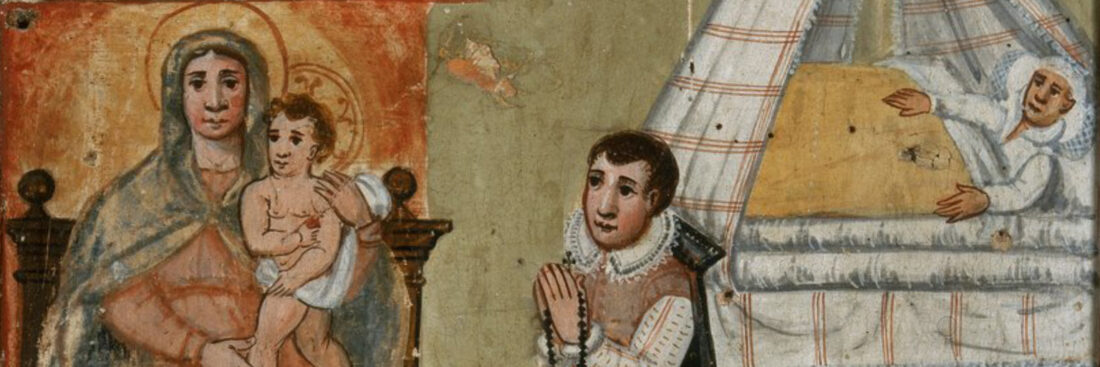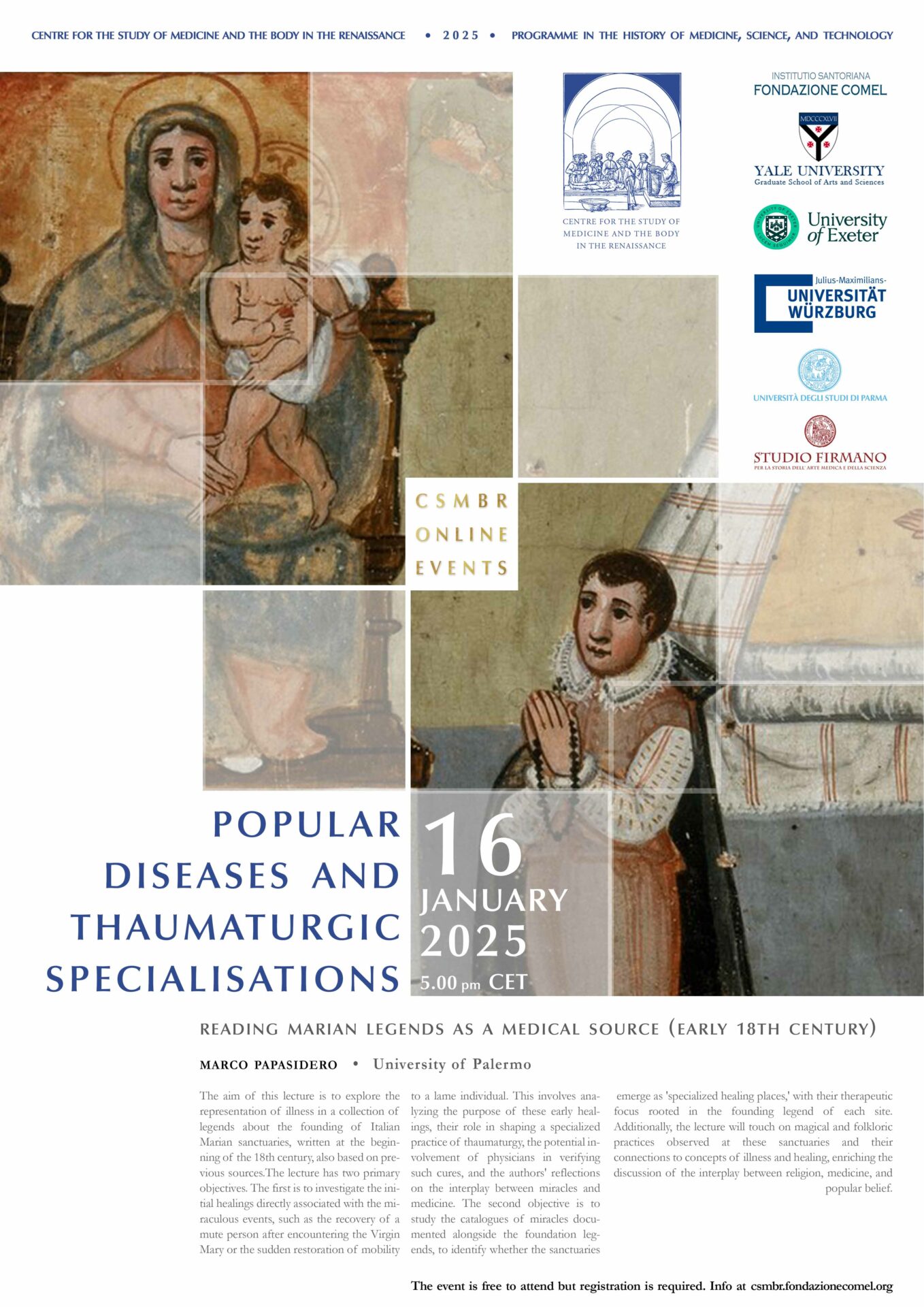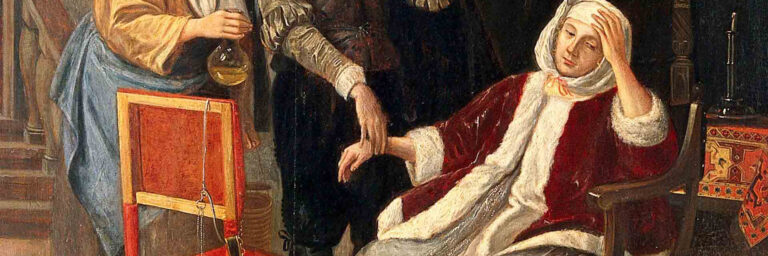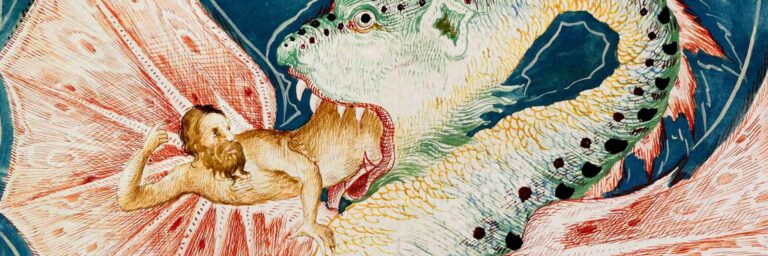Popular Diseases and Thaumaturgic Specialisations


Popular Diseases and Thaumaturgic Specialisations
Reading Marian Legends as a Medical Source (early 18th century)
Marco Papasidero
16 January 2025 – 5 PM (CET)
Research for this lecture has been supported by

This lecture aims to examine how illness is represented in a collection of legends surrounding the foundation of Italian Marian sanctuaries, written in the early 18th century and drawing on earlier sources. Two key works are central to this exploration: Zodiaco di Maria (1715) by the Dominican Serafino Montorio, which surveys the Marian sanctuaries of the Kingdom of Naples, and Palermo divoto di Maria Vergine (1719) by Canon Antonino Mongitore, which focuses on the Marian sanctuaries of Palermo and its surroundings.
These narratives often recount the origins of Marian cults, including the discovery of a lost image, miraculous events such as weeping or bleeding artifacts, or apparitions of the Virgin Mary. Such supernatural occurrences frequently coincide with cases of healing attributed to the miraculous event. These foundational legends are typically followed by accounts of further miracles linked to the sanctuaries and the enshrined images.
In this talk, I will attempt to examine various aspects of the presence of non-human animals in the constitution of medical knowledge. My aim is dual. The first is to investigate the initial healings directly associated with the miraculous events, such as the recovery of a mute person after encountering the Virgin Mary or the sudden restoration of mobility to a lame individual.
This involves analyzing the purpose of these early healings, their role in shaping a specialized practice of thaumaturgy, the potential involvement of physicians in verifying such cures, and the authors’ reflections on the interplay between miracles and medicine.
The second objective is to study the catalogues of miracles documented alongside the foundation legends, to identify whether the sanctuaries developed a specific therapeutic specialization based on the initial healing or diverged entirely. From this perspective, the sanctuaries emerge as ‘specialized healing places,’ with their therapeutic focus rooted in the founding legend of each site.
Additionally, the lecture will touch on magical and folkloric practices observed at these sanctuaries and their connections to concepts of illness and healing, enriching the discussion of the interplay between religion, medicine, and popular belief.
About the Speaker ...
Marco Papasidero is a Research Fellow at the University of Palermo.
He received his PhD in History from the University of Messina, and then a fellowship at the General Archive of the Carmelite Order in Rome. He won the 2018 Sangalli Institute Award for Religious History for his PhD thesis, which was published by the Firenze University Press in 2019 with the title Translatio sanctitatis. I furti di reliquie nell’Italia medievale. He also authored the volumes «A laudi Deu». Luigi Rabatà tra storia, memoria e pratiche devozionali (2019, Edizioni Carmelitane) and Miracula et Benefitia. Malattia, taumaturgia e devozione a Licata e in Sicilia nella prima età moderna (2021, Edizioni Carmelitane). He was a temporary professor (2019/2020) in History of Ancient and Medieval Christianity at the University of Padua. In October 2022 he was Research Fellow at the Edward Worth Library in Dublin.







